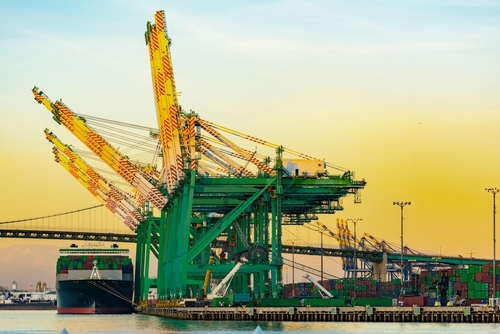The U.S. Environmental Protection Agency (EPA) has launched the $3 billion Clean Ports Program to fund zero-emission equipment, infrastructure, and climate planning at U.S. ports.

According to the EPA, the program is designed to help ports across the country transition to fully zero-emissions operations—serving as a catalyst for transformational change across the freight sector. The funding opportunities were created under the Inflation Reduction Act—the largest climate investment in history—and will advance environmental justice by reducing diesel pollution from U.S. ports in surrounding communities.
“Our nation’s ports are among the busiest in the world, helping us to create good jobs here in America, move goods, and grow our economy,” said EPA Administrator Michael S. Regan. “Today we’re making $3 billion available to install cleaner and more efficient technologies while cutting air pollution to protect the people who work at and live near ports.”
Project Grants
The EPA is releasing two separate Notice of Funding Opportunities:
- The nearly $2.28 billion Zero-Emission Technology Deployment Competition will directly fund zero-emission port equipment and infrastructure to reduce mobile source emissions at U.S. ports. Eligible uses of funding include human-operated and -maintained zero-emission cargo handling equipment, harbor craft and other vessels, electric charging and hydrogen fueling infrastructure, and a number of other technology investments. Applications under this competition will be evaluated under multiple tiers in order to ensure that funds are distributed across ports of different sizes and types, and to ensure funding for ports serving Tribal communities.
- The approximately $150 million Climate and Air Quality Planning Competition will fund climate and air quality planning activities at U.S. ports—including emissions inventories, strategy analysis, community engagement, and resiliency measure identification.
Eligibility
The grants are available to port authorities; state, regional, local, or Tribal agencies that have jurisdiction over a port authority or port; air pollution control agencies; and private entities that apply in partnership with an eligible entity above, and that own, operate, or use facilities, cargo-handling equipment, transportation equipment, or related technology of a port.
The funding can be used for projects at water ports (coastal and inland), as well as projects at facilities where goods are transferred between rail cars and trucks (dry ports).
Applications are due May 28. More information is available here.
The new Clean Ports Program builds on the EPA’s Ports Initiative and the Diesel Emissions Reduction Act programs, which have invested over $196 million to implement 207 diesel emissions reduction projects at ports with an additional $88 million to multi-sector projects that involve ports.
